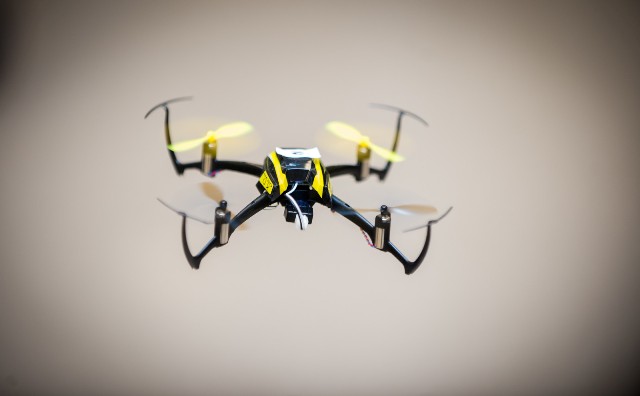May 12 2015
Indiana State University is part of a team the Federal Aviation Administration has selected to help develop rules regulating commercial unmanned flights.
 An unmanned avaition systems quad copter flies during an Indiana State University class Feb. 17, 2015.
An unmanned avaition systems quad copter flies during an Indiana State University class Feb. 17, 2015.
Indiana State's unmanned systems program is one of 16 higher education partners in an alliance based at Mississippi State University that will operate a new National Center of Excellence for Unmanned Aircraft Systems. The alliance, which also includes more than 100 government and industry partners, will launch a new era of commercial unmanned aircraft research, development and integration into the nation's airspace.
"We were pleased that Mississippi State recognized the potential of Indiana State's unmanned systems program by inviting us to be a partner in this alliance three years ago. This announcement is good news for our program, its students and the state of Indiana," said Bob English, dean of Indiana State's College of Technology.
Indiana State is the only university in the state with FAA certificates of authorization to operate unmanned aerial systems. That authorization covers Terre Haute International Airport-Hulman Field and the Indiana National Guard's Muscatatuck Urban Training Center. Indiana State offers a minor in unmanned systems and has a proposal before the Indiana Commission for Higher Education to offer a bachelor's degree in the subject.
The center of excellence will provide the FAA and industry with research to maximize the potential of commercial unmanned systems with minimal changes to the current system regulating manned aircraft. The alliance will form teams between its members to address both government and commercial challenges.
"This world-class public-private partnership will help us focus on the challenges and opportunities of this cutting-edge technology," said U.S. Transportation Secretary Anthony Foxx. "We expect this team will help us to educate and train a cadre of unmanned aircraft professionals well into the future."
The center's research areas are expected to evolve over time, but initially will include detection and avoidance technology, low-altitude safety, control and communications, spectrum management, human factors, compatibility with air traffic control operations and training and certification of unmanned pilots and crewmembers.
The FAA expects the center to begin research by September and be fully operational by January.
"Our unmanned systems program at Indiana State focuses on non-conflict uses of the technology such as natural disaster response, humanitarian relief, environmental assessments and precision agriculture," said Don Bonte, director of the Center for Unmanned Systems and Human Capital Development at Indiana State. "We look forward to working with our partners in this alliance. It will be a great service to our state and nation and also provide our students with invaluable preparation for careers in this exciting new field."
Nationwide, the unmanned aircraft systems market is projected to create more than 100,000 jobs and $82 billion in economic impact in the first decade after FAA integration is complete, according to the Association for Unmanned Vehicle Systems International.